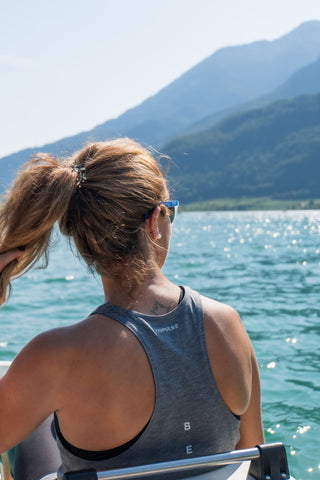How much water do you use in a day?
Now, you might be thinking about how many glasses you’ve gone through, or how many times you’ve topped up your water bottle. Perhaps your daily shower has crossed your mind too.
But have you ever considered how much water went into making your clothes?
The fashion industry currently uses enough water to quench the thirst of 110 million people for an entire year (1). This isn’t necessary, and it certainly isn’t ethical.
So how can fashion reduce water waste? How are we reducing our water footprint at Tripulse?
Let’s dive straight in…
What is water waste?
Water waste can be defined as any water that has been used in a manufacturing process. In fashion, this includes everything from making the materials to dyeing and finishing the fabrics.
Why is water waste a problem?
Water is the earth’s most treasured resource. Every living thing depends on it for survival. But, unfortunately, not everyone has access to it.
World Water Day (WWD) is held on the 22nd of March every year. It’s a day to raise awareness of the 2 billion people living without access to safe water. The core focus is to inspire action towards the UN’s Sustainable Development Goal 6: water and sanitation for all by 2030. Since excessive water usage limits its availability to communities that need it, water waste is a huge ethical problem.
Not only is it unethical, but it’s unsustainable too. If used water is polluted with chemicals, toxins, human waste, or plastic, it wreaks havoc to the environment.
Water waste in fast fashion
By now, you’re probably well aware of the pitfalls of fast fashion, but let’s zoom in on its water waste problem specifically. An estimated 93 billion cubic metres of water is used by the fashion industry each year (2) – that’s 4% of all freshwater extraction globally!
And the problem goes beyond the water used in the production of fabrics, to the water pollution these fabrics cause. Let’s take polyester as an example. As we discussed in this post, it’s an oil-based plastic that doesn’t biodegrade. When it’s washed it releases thousands of microplastics into the environment that make their way into the oceans.
So how can fashion reduce water waste?
As a key problem in the industry, it’ll take collective efforts across the board to find a solution. Here’s how we’re doing our part to reduce fashion’s water footprint.

How are we reducing our water waste?
Tripulse activewear is made from water’s best friend: trees.
The fabric we use, Tencel, is made from the wood of sustainably sourced Eucalyptus and also includes pine, spruce and birch trees. As trees are part of nature’s water cycle, they need much less additional water to grow compared to e.g. cotton. And better than that, they help stabilize the water supply and provide protection against flooding and water shortages (3).
But what about the production and the finishing touches? Doesn’t that use and pollute water?
Tencel is made in a circular system where 99% of the water used is being re-used over and over again.
The process water used for pulp and fiber production is purified in Lenzing's efficient wastewater treatment plants, while the cooling water is not chemically changed and released back into the environment in accordance with environmental regulations. Lenzing has nearly a closed-loop cooling water system in place and therefore requires only little extra water to compensate for losses (3).
Research suggests that 100 to 150 litres of water are used to dye and finish common materials like cotton and polyester. Tencel, however, doesn’t require this water-consuming process (4).
On top of that, as we mention in our materials section, all our materials are Oekotex Standard 100 certified, meaning they don’t contain any harmful chemicals and that could pollute our waters. In additon, they are REACH conform. REACH is a regulation of the EU created to improve the protection of human health and the environment from the risks that can be posed by chemicals, and ensures that the substance can be safely used without harming the end customer.
And we’re not stopping here…
Continually working to #bebetter
We’re proud to make activewear that uses a lot less water than the industry standard, but as with everything in sustainability, we know that there’s always more work to be done. We are committed to keep on working on reducing our water footprint across the entire supply chain.
Together, let’s find a solution
Discover more about our sustainable activewear this World Water Day.
Sources:
(1) https://www.commonobjective.co/article/the-issues-water
(2) https://www.commonobjective.co/article/the-issues-water
(3) https://www.lenzing.com/sustainability/production/resources/water
(4)https://www.thesustainablebusinessgroup.com/source/filemanager/files/GLASA_report_v6_14_10_15_final.pdf










